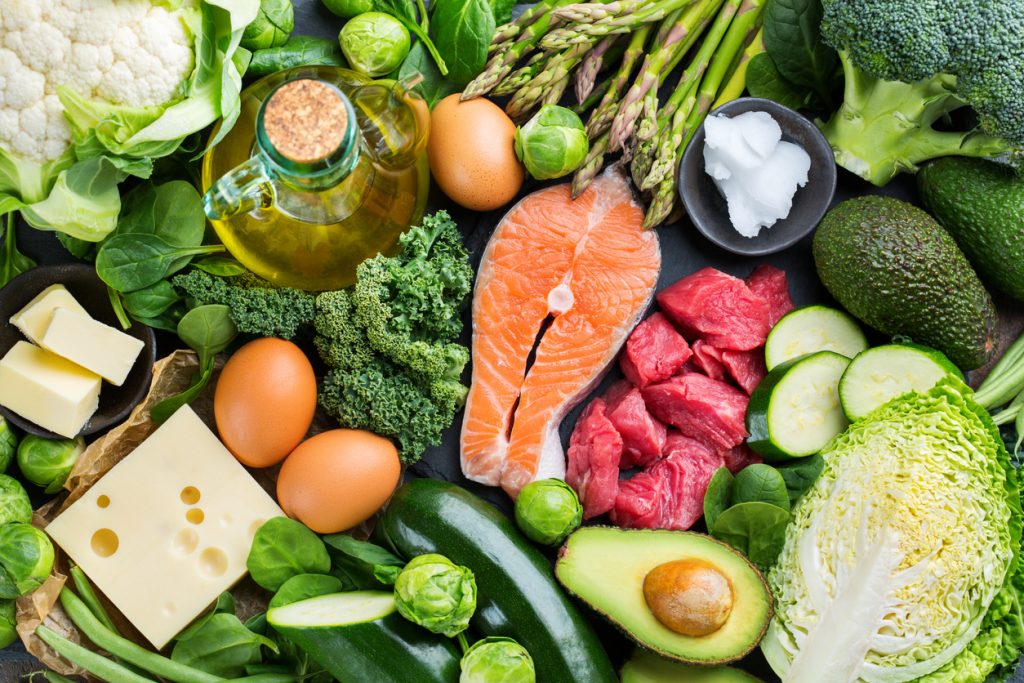There’s a lot of hype about the ketogenic diet, and you’ve probably heard it in passing as well, either from friends or family. While to most it’s simply a weight loss marvel, to others, it’s a medical diet that allows them to live a healthier and productive life. Unlike most eating plans, the ketogenic diet is more complex. It takes real work, real planning, and more than just commitment. Additionally, there are a couple of risks you take when you don’t do it the right way. Here’s all you need to know about ketosis and the keto diet.
Ketosis Explained: How Your Body Uses Fat for FuelWhat Is Ketosis?
Interestingly, you may have gone into a state of mild ketosis today without even knowing it. It’s a metabolic process that occurs when your body turns to burning stored fat to produce ketones and use it as an energy source. That only happens when your body is low on carbohydrates and your glucose stores are depleted.
You can achieve a state of ketosis by forcing your body to rely on fat as an energy source. That makes it easier to maintain this state. Additionally, ketosis can occur if you are diabetic and your body either lacks enough insulin or is improperly using the one it has.
How Ketosis Works in the Human Body
Let’s start with how your body utilises sugar and carbs. When you eat any food high in carbs, your body breaks them down into much simple sugars or glucose. It uses these as fuel and the extra is stored as glycogen in the liver.
When you withdraw from carbs, your body adapts a new strategy of using stored fats as fuel. Your body breaks these fats down and releases different types of ketones in the process. The state your body is in at this point is a ketosis state.
Effects of Ketosis
Moreover, ketosis can help you feel full for a longer period and as such suppress your appetite. This is what makes it a great choice for people looking forward to cutting some weight. Others use ketosis to build muscle mass while burning the extra fats in their bodies, especially in the arms.
While ketosis mostly comes up when people are discussing weight loss diets or diabetes, it can be helpful for more than just that. For instance, it can be used to prevent epileptic seizures, especially in children. In that case, children can achieve ketosis by going into a short fast of at least 12 hours. For most, it can take days of having this short fast, while others achieve it much easier. However, there are other ways of inducing this state.
What Is a Ketogenic Diet?

This is basically a diet that is high in protein and fat. A ketogenic diet is also low on carbs. For instance, a good keto diet gets at least 70 percent of its calories from fat, 20 percent from proteins, and the remaining 10 percent from carbs.
Even so, a ketogenic diet is highly individualised, and your diet version may differ from this example. It’s best to start with what works for you. You can start with reducing your carb intake to not more than 50 grams a day. This amount is equivalent to eating two bananas or three slices of bread. Even so, don’t expect your ketone levels to increase in one day. That will only happen if you do this consistently for a couple of days.
Why Start a Ketogenic Diet
As mentioned earlier, starting a ketogenic diet can be extremely beneficial—as a weight loss diet or a medical diet for epilepsy and diabetes. But there are numerous other benefits you can enjoy. Although research is still ongoing, the health benefits of ketosis on health conditions are simply mind-boggling. Here are other benefits of the keto diet;
It Can Help Improve Your Athletic Performance

A Keto diet affords you an easier way of controlling your energy levels. One thing that using carbs or glucose for energy fails in is how fast you run out of it. Once you get hungry, your energy levels go low to let you know it’s time for a refill. That can be very inconvenient, especially for an athlete.
On the other hand, no matter how skinny you are, your body has quite a significant level of fats to burn. These steady energy levels are something that every athlete wants. When you train your body to maintain ketosis using a keto diet, you can always be sure of having sufficient energy for training or a marathon.
Helps Lower Cholesterol Levels and Blood Pressure
High cholesterol and blood pressure are often high risk conditions. From stroke to cardiovascular issues and obesity, everyone does their best to avoid these conditions. Well, keto can help you with that. That’s because ketogenic diets help improve LDL cholesterol levels that cause an arterial build-up.
Additionally, that affords a better blood flow through your arteries. Plus, this diet ensures there’s a steady increase in HDL cholesterol, which is a good type of cholesterol. That can also help with weight loss.
Improves Mental Focus
Another downside to relying on sugar and glucose as a source of fuel is the highs and lows that make it impossible to focus. Ketones can be used as a steadier source of energy for your brain. As such, you can expect to have better and more consistent mental focus and clarity. Who wouldn’t want that?
Are There Side Effects of Starting a Ketogenic Diet?
For some beginners, you may experience an unpleasant side effect called keto flu. However, it’s not really a ‘flu’ but your body’s reaction to the switch of energy source from carbs to fats. Adapting a low-carb diet comes with withdrawal symptoms that are very similar to flu or withdrawing from an addictive substance. You may experience this for a week or longer.
However, not everyone gets the keto flu. Plus, others have very mild symptoms while others get more severe symptoms. These include but are not limited to;
- Dizziness
- Constipation
- Headache
- Nausea
- Vomiting
- Carb cravings
- Weakness
- Diarrhoea
The good news is you can prevent it. You can do so by staying hydrated, replacing dietary electrolytes, and getting enough sleep.
Final Thoughts
Ketosis and a ketogenic diet is a great way for you to stay healthy and lead a balanced life. Although starting the keto diet is quite challenging, it’s worth it in the end. It can help you in losing weight, building muscle mass, and more importantly, maintaining stable energy levels.
1 Comment